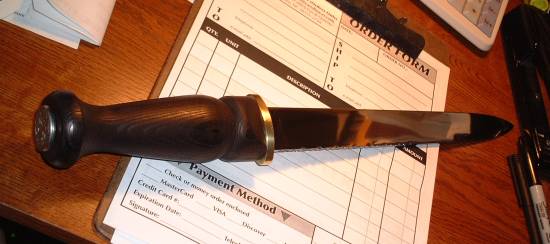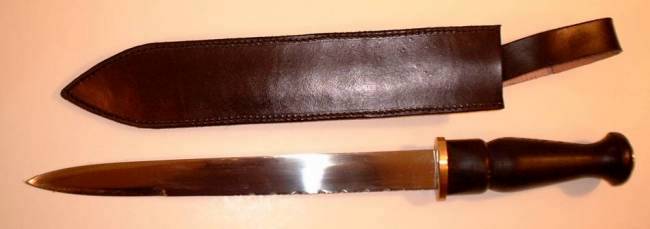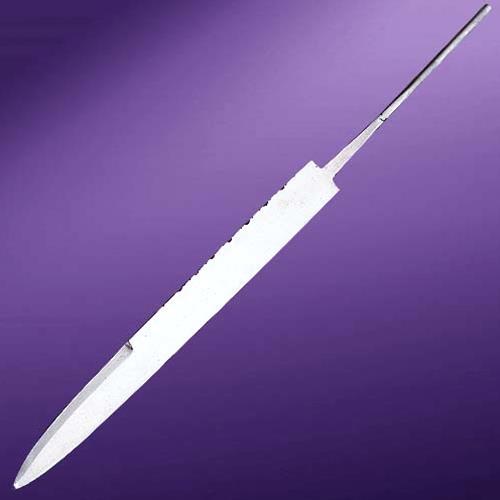Posts: 1,241 Location: NC
Mon 01 Dec, 2014 7:25 am
Found your review. Sorry that I missed it before. That is an Atlanta Cutlery dirk blade. The jimping on the back of the blade is identical to the blades I have. Over the last 14 years or so I have noted some subtle variations in the blades I used; for example the jimping was sometimes ground a bit deeper and the false edge was longer or shorter. The variations were not significant but they were there.
I note something stamped on the blade near the guard which I assume is FIT's trademark. IMHO, if I did not make the blade, I would not stamp it with my trademark although I guess there is no rule against it. I did notice that the tang was drilled all the way through the handle and the pommel apparently threaded on, making it a more sturdy knife.
Maple, while commonly used for knife handles in North America, was not available and not used in Scotland. Usually walnut, boxwood, etc. was used. Also many dirks had handles of brass, nickle silver, even pewter and ivory. Stag-hilted dirks were uncommon prior to 1745 but quite a few were produced in Georgian and Victorian times. African blackwood and ebony were quite popular in the 19th c. and later.
I have attached a couple of photos of the dirks I used to make with the Windlass blades. As I am out of the business and the new owners do not plan to stock anything like this I should not be breaking any forum rules by posting it. We asked quite a bit less than $225 for these dirks which we considered entry-level knives, i.e. something for someone new to Scottish weaponry who wanted something to wear on their kilt belt.
You seem happy with the dirk and that is the most important thing. It looks like a well-constructed piece and as I mentioned previously, there is nothing wrong with Windlass dirk blades. If there was I would have found out by now.
 Attachment: 24.45 KB
Attachment: 24.45 KB

 Attachment: 14.76 KB
Attachment: 14.76 KB



